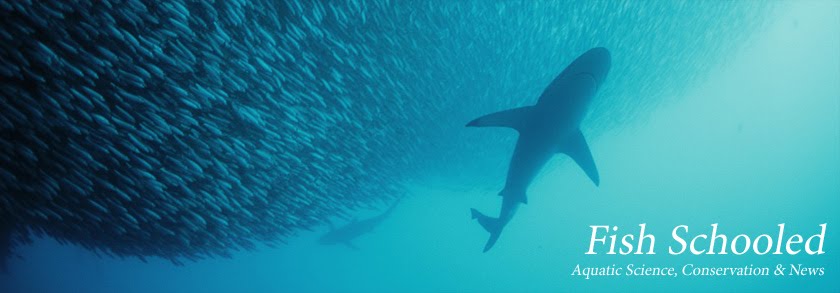
Source: AIMS - Australia's Tropical Marine Research Agency
Studying fish populations has long been the domain of underwater visual census surveys (UVC). Using this approach is useful in that the technique is straight forward and inexpensive, as it usually involves SCUBA divers or snorkelers counting fish along a transect. This method is a critical part for monitoring environmental changes over time or conservation efforts. The problems with such a method is that it involves a human observer bias, which directly or indirectly affects fish behaviour. Fish tend to be scared off or attracted to the noise and sight of the observers (Willis et al. 2000; Radford et al. 2005). Thus, it has been proposed that such methods bias any results during fish quantification.
Recently, baited underwater video (BUV) has been utilised to assess fish populations and it was found to be far more successful at estimating fish density (Willis et al. 2000; Dearden et al. 2009). This method relies on a camera that typically sits directly above some smelly bait in a container, and records any fish that is attracted to the bait. The advantages of such methods is that the human observer presence effect is eliminated.
 Source: Tepapa NZ
Source: Tepapa NZ
However, a recent study comparing BUV with UVC has found the opposite result (Stobart, 2007) . Here is the abstract:
A baited underwater video (BUV) system for the study of reef-associated fish populations on shallow (10–20 m) rocky habitats in the western Mediterranean was assessed at four locations in Spain and two in France. We describe the apparatus and optimal deployment times for video sampling. Different species had different response times to the bait, with four response groups identified. Examination of species accumulation curves and fish abundance estimates over time revealed that a period of approximately 20 min deployment was sufficient to capture most species on video. The technique sampled a wide variety of species, with 51 species belonging to 33 families recorded. Nine species of fish appeared regularly at the bait in relatively high numbers, and consist of six carnivores (Serranus cabrilla, Serranus scriba, Coris julis, Diplodus annularis, Diplodus vulgaris, Thalassoma pavo), two planktivores (Chromis chromis, Boops boops) and one omnivore (Oblada melanura). However, abundance estimates for other species were generally very low (mean b1 per location). Comparison of results from BUV with those obtained by Underwater Visual Census (UVC) at the same locations suggests that although BUV estimates species richness reliably, UVC is the more suitable technique for estimating the abundance of shallow-water reef fish in the Mediterranean. BUV improvements are suggested to optimise its use in deeper waters where UVC using scuba is inoperable.
The author also correctly states that the amount of effort required to undertake a BUV based estimation of fish abundance may not be worth the effort. This requires hundreds of hours (perhaps thousands) of painstakingly slow video analysis. It is also only feasible to have one BUV apparatus deployed at any given time unless you have a large vessel, which would be expensive. Thus, the field work component would also take a much longer time than using SCUBA divers. The advantages of BUV is that it is not biased by human observers (although training can minimise this problem), and data can be continuously checked after the event.
In the end I think it largely comes down to the geographic locality and the fish species involved. Different fish species behave differently, and therefore one method might be better suited to that particular type of fish. For example, nocturnal fish are likely to be deterred by the bright lights produced from torches at night, and may be more attracted to bait due to relying more heavily on non-visual senses such as olfaction. Thus, for nocturnal fish the BUV maybe a more appropriate methodology. Also, no technique is perfect and each would have it's own advantages and disadvantages. As the authors suggest it would be most beneficial to combine the methods so that they are able to cross check one another. Unfortunately, this is likely to not be feasible the majority of the time.
Willis T, Millar R, Babcock R (2000) Detection of the spatial variability in relative density of fishes: comparison of visual census, angling, and baited underwater video. Marine Ecology Progress Series 198: 249-260
Radford C, Jeffs A, Tindle C, Cole R, Montgomery J (2005) Bubbled waters: The noise generated by underwater breathing apparatus. Marine and Freshwater Behaviour and Physiology 38: 313-356
Dearden P, Theberge M, Yasne M (2009) Using underwater cameras to assess the effects of snorkeler and SCUBA diver presence on coral reef fish abundance, family richness, and species composition. Environmental Monitoring and Assessment
Stobart et al. (2007) A baited underwater video technique to assess shallow-water Mediterranean fish assemblages: Methodological evaluation. Journal of Experimental Marine Biology and Ecology 345: 158-174

How To Assess Fish Populations?






